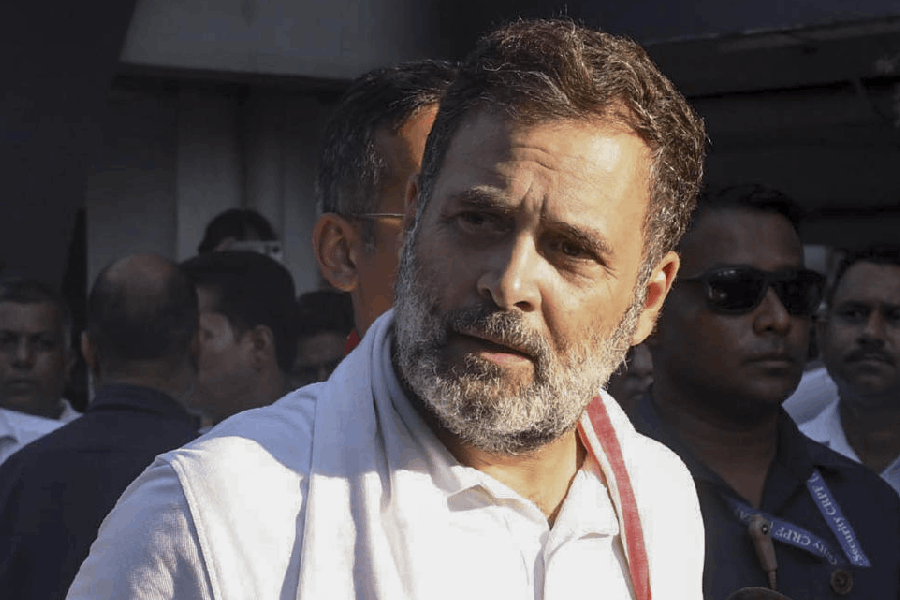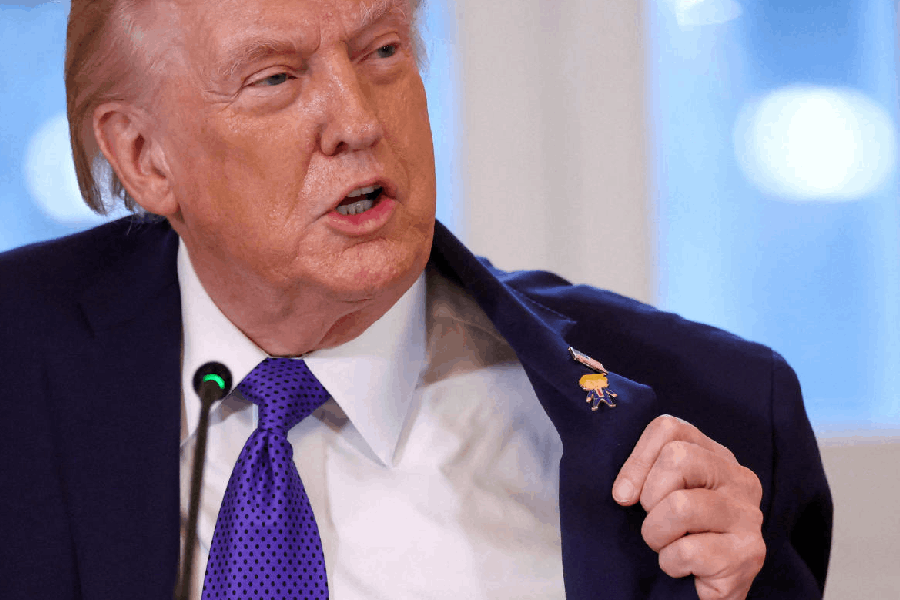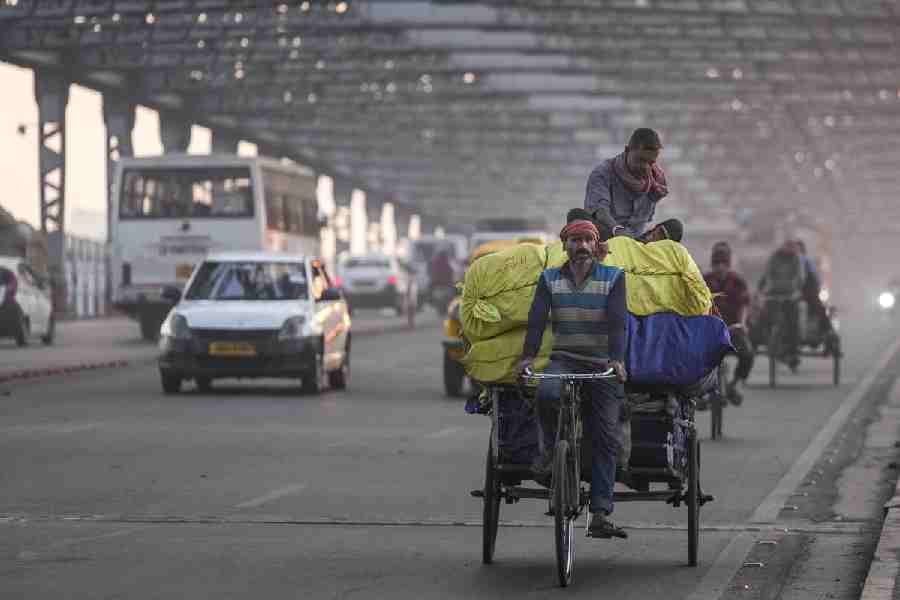As lethal mayhem persisted outside Kabul airport, with thousands of terrified Afghans trying to flee, the Taliban have reached out to a former Afghan President, Hamid Karzai, and to Russia in an attempt to fulfill their pledge to form an “inclusive” government and defeat holdouts against their rule.
Little in the Taliban’s history suggests readiness to compromise on their harsh Islamist principles or to share power, but the US has warned the militant group that going it alone will result in continuous conflict and isolation. In this context, Karzai, who led the country between 2001 and 2014, has tried to put himself forward as a mediator, albeit one under increasingly strained circumstances.
Karzai, 63, a wily maneuverer who as president fell out with the US over American drone attacks, corruption allegations and other issues, has stepped into the void left by the flight a week ago of President Ashraf Ghani. He has met Taliban leaders, including Khalil Haqqani, who has been designated as a terrorist by the US, and is working closely with Abdullah Abdullah, the head of the former Afghan’s government’s peace delegation.
A Taliban leader described as the acting governor of Kabul, Mullah Abdul Rahman Mansour, talked over the weekend with Karzai and Abdullah. A growing number of senior Taliban have been seen in Kabul in recent days to discuss the shape of the next government, among them Mullah Abdul Ghani Baradar, the Taliban’s chief diplomat and a senior official in the group’s government in the 1990s.
A deputy within the Taliban’s cultural affairs committee, Ahmadullah Waseq, said on Saturday that although the Taliban officials were mostly talking among themselves to prepare for more formal negotiations, “we will talk with other parties to form an inclusive government acceptable to all Afghans”.
A delegation of Taliban leaders also visited the Russian embassy in Kabul, asking officials there to pass along an offer of negotiations to a group of Afghan leaders holding out in northern Afghanistan, the Russian ambassador, Dmitri Zhirnov, told a Russian television interviewer on Saturday.
Karzai’s position, vis a vis the Taliban, is also tenuous. Both Karzai and Abdullah were on a Taliban list of wanted people, and former government officials said they were concerned for their safety.
Dr. Abdullah lives in his family’s home and invited Mr. Karzai to stay there after the Taliban took over the former president’s house.
Dr. Abdullah has been hosting large meetings with officials and tribal leaders, including delegations of Taliban members, at his home, photographs of which he has posted on social media.
But the Taliban have placed guards outside his home and search every vehicle that enters, according to Muslem Hyatt, a former military attaché for the Afghanistan government to London.
“We are very worried,” Mr. Hyatt said.
How the United States will view Mr. Karzai’s re-emergence was unclear. So, too, was whether Afghans would believe the sudden professed moderation of the Taliban, whose oppression of women and brutality have been hallmarks of their fundamentalism.
A week after the Taliban overran the country and the two-decade long American attempt to shape a democratic Afghanistan collapsed, there was no sign of any cabinet taking form.
Chaos still engulfed the nation’s capital, a fiasco whose political fallout President Biden is struggling to contain. In an afternoon news conference at the White House, Mr. Biden defended the administration’s widely criticized evacuation effort.
“Altogether, we lifted approximately 11,000 people out of Kabul in less than 36 hours,” he said. “It’s an incredible operation.”
The president seemed to suggest that the U.S. forces defending the Kabul airport were extending the security perimeter, saying that the military has made “tactical changes” to increase security. Mr. Biden also said that the Aug. 31 deadline for removing all American troops could be extended if necessary.
Mr. Biden said he did not know whether the Taliban could be trusted to form an “inclusive” government and rule with greater moderation than in their first time in power. But he said that they had “by and large” given Americans access to the airport, and that if they wanted to govern Afghanistan effectively, they would need help from the United States and other nations.
In the U.S., the end of its longest war spurs confusion and apathy.
The Taliban pledge inclusivity as transition talks begin, but doubts persist.
Australia tells Afghan refugees: ‘Do not attempt an illegal boat journey.’
“The Taliban has to make a fundamental decision,” he said. “Is the Taliban going to attempt to be able to unite and provide for the well-being of the people of Afghanistan, which no one group has ever done since before — for hundreds of years? And if it does, it’s going to need everything from additional help in terms of economic assistance, trade and a whole range of things.”
Mr. Biden has vowed to get every American out of Afghanistan, though how many that may be is unknown.
“We cannot give you a precise number,” Jake Sullivan, Mr. Biden’s national security adviser, said on CNN’s “State of the Union” on Sunday. In another interview, on NBC’s “Meet the Press,” he estimated that “roughly a few thousand” Americans were trying to leave Afghanistan.
Aside from American citizens, the president has vowed to redouble efforts to save Afghans who worked with the United States and are likely to be targeted by the Taliban.
The British Defense Ministry, which has troops at the airport, said Sunday that seven Afghan civilians had died in the crowds, where people have been trampled to death, among them a 2-year-old girl. “Conditions on the ground remain extremely challenging,” the ministry said.
In a phone interview, Jane Ferguson of the PBS NewsHour, one of the few Western correspondents still in Kabul, said: “The scenes are apocalyptic. People are fainting and dying. Children are going missing.”
Understand the Taliban Takeover in Afghanistan
Card 1 of 5
Who are the Taliban? The Taliban arose in 1994 amid the turmoil that came after the withdrawal of Soviet forces from Afghanistan in 1989. They used brutal public punishments, including floggings, amputations and mass executions, to enforce their rules. Here’s more on their origin story and their record as rulers.
Who are the Taliban leaders? These are the top leaders of the Taliban, men who have spent years on the run, in hiding, in jail and dodging American drones. Little is known about them or how they plan to govern, including whether they will be as tolerant as they claim to be.
How did the Taliban gain control? See how the Taliban retook power in Afghanistan in a few months, and read about how their strategy enabled them to do so.
What happens to the women of Afghanistan? The last time the Taliban were in power, they barred women and girls from taking most jobs or going to school. Afghan women have made many gains since the Taliban were toppled, but now they fear that ground may be lost.
Taliban officials are trying to reassure women that things will be different, but there are signs that, at least in some areas, they have begun to reimpose the old order.
What does their victory mean for terrorist groups? The United States invaded Afghanistan 20 years ago in response to terrorism, and many worry that Al Qaeda and other radical groups will again find safe haven there.
Every death at the Kabul airport, every child with a teddy-bear backpack separated from a parent, every Afghan supporter of the United States who is marooned, reinforces the impression of an unplanned United States withdrawal that was too precipitous and based on a disastrous misjudgment of the capacities of the American- and NATO-trained government military forces. They simply melted away.
Violent scenes at the airport have become grimly commonplace as Afghan desperation meets a dearth of flights and American disarray as to how to deal with overwhelming demand for protection and asylum.
In an effort to speed the evacuation, Defense Secretary Lloyd J. Austin III ordered six commercial airlines to provide passenger jets to help with the growing U.S. military operation evacuating Americans and Afghan allies from Kabul, the Afghan capital, the Pentagon said on Sunday.
Mr. Austin activated Stage 1 of the Civil Reserve Air Fleet, created in 1952 after the Berlin airlift, to provide airliners to help ferry passengers arriving at bases in the Middle East from Afghanistan, John F. Kirby, the Pentagon spokesman, said in a statement.
The current activation is for 18 planes: four from United Airlines; three each from American Airlines, Atlas Air, Delta Air Lines and Omni Air; and two from Hawaiian Airlines. The civilian planes will not fly into or out of Kabul, where a rapidly deteriorating security situation has hampered evacuation flights.
At Kabul airport, the presence of Taliban fighters around the perimeter mingling with British and other Western forces created an impression “like a very strange dream,” Ms. Ferguson said. It underscored how, in a moment, with scarcely a shot fired, Afghanistan was lost, the Taliban entered Kabul and the white flag of the Islamic Emirate of Afghanistan was hoisted.
Still, resistance remains among the Afghan leaders who have taken refuge in the Panjshir Valley, a rugged gorge where Afghan fighters resisted the Taliban for years during Afghanistan’s civil war in the 1990s. Former Afghan officials put the number of fighters holed up today in the Panjshir at 2,000 to 2,500 men, but they are isolated and lack logistical support.
A former first vice president, Amrullah Saleh, who is based there, now claims to be the “caretaker president” under Afghanistan’s U.S.-brokered Constitution of 2004, because President Ghani has fled the country. The Panjshiris have said they intend to resist a takeover of the valley unless the Taliban agree to an inclusive government.
The Taliban’s request that Russia mediate negotiations with the holdouts appeared to underscore America’s weakening strategic position in Afghanistan. The Taliban has this year intensified ties with the Kremlin as the pre-eminent power in Central Asia.
Since being toppled in 2001, the Taliban have gained diplomatic experience and are aware of how international isolation crippled the economy in their previous rule from 1996 to 2001. Still, any attempt to be “inclusive” will face opposition from hard-liners that even Mr. Karzai will be hard-pressed to finesse.
If Mr. Karzai is perhaps less hated by the Taliban than was his successor, Mr. Ghani, he is nonetheless regarded with deep suspicion. Up to now there appears to be no reason to believe he has made headway in his pursuit of a peaceful transition acceptable to a majority of Afghans.
New York Times News Service










